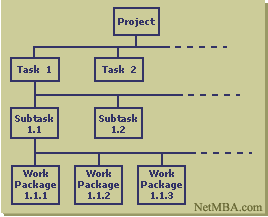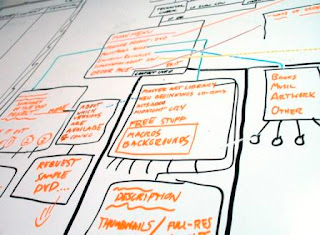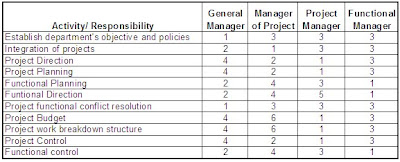ads
Friday 10 June 2011
Tuesday 7 June 2011
Saturday 4 June 2011
Steps Of Project Management
1. Team Assembly
No man is on an island. Same is true in undergoing a project. It is a collaboration of different minds working together to come up with a cohesive idea and plan out the strategies needed to execute the project successfully. In creating your team make sure that you have different people from a variety of fields to have the most brilliant ideas on hand.
2. Project Initiation
Identification of the project definition, objectives and approach are discussed in this phase. It is important to have your goal in mind before starting to brainstorm into the scope and specifications of your project to serve as your guide throughout the duration of the project.
3. Project Planning
Among the project management steps, I would say this is very important since the foundation and backbone of the project will depend on the planning stage. If a complete and thorough planning is done the probability of setbacks and problems along the course of the project will be highly prevented. As a project manager you would need to use management-level planning to map out an overview of resources, acquisitions, subcontracts and costs. It is expected of you to estimate, plan and oversee all phases of the project management phase. As a project manager you need to include your team or set up a committee to execute project planning.
4. Project Execution
In this project management step the project manager needs to know the importance of delegation. Each task needs to be delegated to everyone to achieve efficiency in delivering results. It is also helpful since easy tracking can be done through small teams or groups working together as one to achieve a single goal identified on the Initiation phase. Use a project management software to give a constant overview of how the project is going in terms of scheduling, cost control, budget management, resource allocation, collaboration software, communication, quality management and documentation or administration systems especially in large scale projects. Then collaborate with your team to hold meetings and conferences to provide feedback solve challenges and aid in decision making. Communication is essential in making your project a success to determine degree of dependency among team members and to foster camaraderie.
5. Project Leadership
What sets apart a manager and a leader? Some might not even know the slightest difference. A leader leads by example by that it means he embodies in himself the values of providing quality service to others. He is passionate in helping his team members be productive and resourceful without demanding for results right away. A leader knows and understands his team members weaknesses and strengths which he works around to motivate them to do their best and work collaboratively to produce excellent results.
6. Project Monitoring and Controlling
In any project you need to be able to allocate your resources effectively. Project software is available to oversee your costs, resources and financial capability throughout the project. Highest quality is achieved by constant monitoring and project tracking. Standard Quality is the goal being obtained in this phase to be able to present a high quality result.
7. Project Presentation
This phase is close to completion of the project wherein majority of what was planned has already taken place. The client will have a preview of the project outcome before it is officially launched to be able to change, update or do some minor revisions. The project manager will have the responsibility in presenting to the clients since he is the head of the organizing team. Effective communication skills are needed to undergo this phase impressively.
8. Project Conclusion
At any project close there should be a complete documentation, audit and feedback. Regardless of the success of the project, proper transition of work processes and deliverables should be done. Proper documentation of processes should have been established with sufficient data for the operation of the system and to also provide basis for future projects and maintenance.
Project Management
Project management is a carefully planned and organized effort to accomplish a successful project. A project is a one-time effort that produces a specific result, for example, a building or a major new computer system. This is in contrast to a program, which is 1) an ongoing process, such as a quality control program, or 2) an activity to manage a series of multiple projects together. In some countries, the term "program" refers to a software tool and the term "programe" can mean a TV or radio show.
Projects usually follow major phases or stages (with various titles for these), including feasibility, definition, project planning, implementation, evaluation and support/maintenance.
Projects usually follow major phases or stages (with various titles for these), including feasibility, definition, project planning, implementation, evaluation and support/maintenance.
Friday 3 June 2011
LINEAR RESPONSIBILITY CHART
Linear Responsibility Chart: Linear Responsibility Chart is also known as linear chart (LC), Matrix Responsibility Chart (MRC), Responsibility Interface Matrix (RIM), Responsibility and Accountability Matrix (RAM). It is the chart of responsibility which identifies the project participants and shows authority and responsibility relationship among the project participants due to their overlapping involvement in project management. The participants may be general manger, manager of projects, project manager and functional managers. It clearly specify the authority and responsibility relationships of project participants to avoid confusion and conflicts. Specially, it is used inmatrix organization structure in order to minimize the confusion and conflicts between project manager and functional managers. It explains what and who of project work. It links the project activities or task to the responsible person which ensures effective implementation of project to achieve define objectives within constraints.
Symbol/ Code:1 = Actual responsibility
2 = General responsibility/ General Supervision
3 = Most be consulted
4 = May be consulted
5 = Must be notifies
6 = Must approve
Roles & Responsibilities:
- Responsible
- Those who do the work to achieve the task There is typically one role with a participation type of Responsible, although others can be delegated to assist in the work required (see also RASCI below for separately identifying those who participate in a supporting role).
- Accountable
- The one ultimately answerable for the correct and thorough completion of the deliverable or task, and the one from whom Responsible is delegated the work In other words, an Accountable must sign off (Approve) on work that Responsible provides. There must be only one Accountable specified for each task or deliverable
- Consulted (sometimes Counsel)
- Those whose opinions are sought, typically subject matter experts; and with whom there is two-way communication
- Informed
- Those who are kept up-to-date on progress, often only on completion of the task or deliverable; and with whom there is just one-way communication
Saturday 28 May 2011
LINEAR RESPONSIBILITY CHART
Linear Responsibility Chart is also known as linear chart (LC), Matrix Responsibility Chart (MRC), Responsibility Interface Matrix (RIM ), Responsibility and Accountability Matrix (RAM). It is the chart of responsibility which identifies the project participants and shows authority and responsibility relationship among the project participants due to their overlapping involvement in project management. The participants may be general manger, manager of projects, project manager and functional managers . It clearly specify the authority and responsibility relationships of project participants to avoid confusion and conflicts. Specially, it is used inmatrix organization structure in order to minimize the confusion and conflicts between project manager and functional managers. It explains what and who of project work. It links the project activities or task to the responsible person which ensures effective implementation of project to achieve define objectives within constraints.
Symbol/ Code:
1 = Actual responsibility
2 = General responsibility/ General Supervision
3 = Most be consulted
4 = May be consulted
5 = Must be notifies
6 = Must approve
1 = Actual responsibility
2 = General responsibility/ General Supervision
3 = Most be consulted
4 = May be consulted
5 = Must be notifies
6 = Must approve
A complex project is made managable by first breaking it down into individual components in a hierarchical structure, known as the work breakdown structure, or the WBS. Such a structure defines tasks that can be completed independently of other tasks, facilitating resource allocation, assignment of responsibilities, and measurement and control of the project.
The work breakdown structure can be illustrated in a block diagram:

The work breakdown structure can be illustrated in a block diagram:
Work Breakdown Structure Diagram

Terminology for Different Levels
Each organization uses its own terminology for classifying WBS components according to their level in the hierarchy. For example, some organizations refer to different levels as tasks, sub-tasks, and work packages, as shown in the above outline. Others use the terms phases, entries, and activities.Organization by Deliverables or Phases
The WBS may be organized around deliverables or phases of the project life cycle. Higher levels in the structure generally are performed by groups. The lowest level in the hierarchy often comprises activities performed by individuals, though a WBS that emphasizes deliverables does not necessarily specify activities.Level of Detail
The breaking down of a project into its component parts facilitates resource allocation and the assignment of individual responsibilities. Care should be taken to use a proper level of detail when creating the WBS. On the one extreme, a very high level of detail is likely to result in micro-management. On the other extreme, the tasks may become too large to manage effectively. Defining tasks so that their duration is between several days and a few months works well for most projects.WBS's Role in Project Planning
The work breakdown structure is the foundation of project planning. It is developed before dependencies are identified and activity durations are estimated. The WBS can be used to identify the tasks in the CPM and PERT project planning models.Work Break Down Structure (WBS)
A complex project is made managable by first breaking it down into individual components in a hierarchical structure, known as the work breakdown structure, or the WBS. Such a structure defines tasks that can be completed independently of other tasks, facilitating resource allocation, assignment of responsibilities, and measurement and control of the project.

Work Breakdown Structure Diagram

Terminology for Different Levels
Each organization uses its own terminology for classifying WBS components according to their level in the hierarchy. For example, some organizations refer to different levels as tasks, sub-tasks, and work packages, as shown in the above outline. Others use the terms phases, entries, and activities.Organization by Deliverables or Phases
The WBS may be organized around deliverables or phases of the project life cycle. Higher levels in the structure generally are performed by groups. The lowest level in the hierarchy often comprises activities performed by individuals, though a WBS that emphasizes deliverables does not necessarily specify activities.Level of Detail
The breaking down of a project into its component parts facilitates resource allocation and the assignment of individual responsibilities. Care should be taken to use a proper level of detail when creating the WBS. On the one extreme, a very high level of detail is likely to result in micro-management. On the other extreme, the tasks may become too large to manage effectively. Defining tasks so that their duration is between several days and a few months works well for most projects.WBS's Role in Project Planning
The work breakdown structure is the foundation of project planning. It is developed before dependencies are identified and activity durations are estimated. The WBS can be used to identify the tasks in the CPM and PERT project planning models.Friday 27 May 2011
definitions of Management
If you look up the dictionary definition of management, among many examples you will find clues as to the real definition of management. This article simply takes an assortment of definitions and looks at what they say and what they imply about management.
The definition goes on to talk about how management is responsible for measuring details that may not be required presently, but may be useful later on. These measurements often help determine the objectives in the planning stage.
When management is following this type of sequence, it becomes a continuing cycle. Plan, execute, and measure. The measurements become the basis for the next planning stage and so on.
“Management” (from Old French ménagement “the art of conducting, directing”, from Latin manu agere “to lead by the hand”) characterises the process of leading and directing all or part of an organization, often a business, through the deployment and manipulation of resources (human, financial, material, intellectual or intangible). …This management definition is interesting because it traces the root meaning back to the Latin phrase meaning “to lead by the hand”. (See management quotes for more perspectives.)Leading by the hand implies giving direction that is stronger than just a passing suggestion yet still fairly gentle in approach. Leading by the hand also implies that the person doing the leading is first going where the follower is being lead. The leader is not asking the follower to do something he is not willing to do himself.
en.wikipedia.org/wiki/Management
The guidance and control of action required to execute a program. Also, the individuals charged with the responsibility of conducting a program.This definition of management refers to a “program”. This implies that, for management to be effective, there needs to be some type of defined approach or system in place. This system becomes the plan and management is guiding others in following that plan. This is often the downfall of managers. They have no plan or system. As a result their actions seem random to the people they are managing and this leads to confusion and disappointment. This is why it is so important for business managers to have an employee manual. Without the employee manual providing direction, managers will struggle to be fair and balanced in their dealings with employees.
www.ojp.usdoj.gov/BJA/evaluation/glossary/glossary_m.htm
is the organizational process that includes strategic planning, setting; objectives, managing resources, deploying the human and financial assets needed to achieve objectives, and measuring results. Management also includes recording and storing facts and information for later use or for others within the organization. Management functions are not limited to managers and supervisors. Every member of the organization has some management and reporting functions as part of their job.This management definition is more in depth and tailored toward business management. Notice that it consists of three primary activities. First, management establishes a plan. This plan becomes the road map for what work is going to be done. Second, management allocates resources to implement the plan. Third, management measures the results to see how the end product compares with what was originally envisioned. Most management failings can be attributed to insufficient effort occurring in one of these three areas.
home.earthlink.net/~ddstuhlman/defin1.htm
The definition goes on to talk about how management is responsible for measuring details that may not be required presently, but may be useful later on. These measurements often help determine the objectives in the planning stage.
When management is following this type of sequence, it becomes a continuing cycle. Plan, execute, and measure. The measurements become the basis for the next planning stage and so on.
is the activity of getting things done with the aid of people and other resources.This definition of management focus on management as the process of accomplishing work through the efforts of others. Skilled managers can accomplish much more through others than they can through their own single efforts.
wps.prenhall.com/wps/media/objects/213/218150/glossary.html
Effective utilization and coordination of resources such as capital, plant, materials, and labour to achieve defined objectives with maximum efficiency.This definition of management looks at not only the people but the entire range of resources necessary to follow a plan. Notice how it focuses on efficiency. Management isn’t just getting from point A to point B. It is getting there by choosing the best possible path.
www.ecbp.org/glossary.htm
1. The process of getting activities completed efficiently with and through other people; 2. The process of setting and achieving goals through the execution of five basic management functions: planning, organizing, staffing, directing, and controlling; that utilize human, financial, and material resources.The first definition looks at the fact that management is getting work done through other people. The second definition divides management up into five components. These components are all parts of the three components (plan, execute, measure) that we looked at above. However the more detailed definition helps show the activities that occur in each of the three phase definition.
www.crfonline.org/orc/glossary/m.html
The process of planning, leading, organizing and controlling people within a group in order to achieve goals; also used to mean the group of people who do this.Once again, this definition of management addresses accomplishing work through other people. This definition stresses the activities that are necessary for reaching particular goals.
www.booksites.net/download/chadwickbeech/Glossary.htm
the process of achieving the objectives of the business organization by bringing together human, physical, and financial resources in an optimum combination and making the best decision for the organization while taking into consideration its operating environment.This management definition talks about the different components that managers need to control in order to achieve objectives. One differentiator of this definition is the way it considers the operating environment as part of what a manager must understand.
www.ucs.mun.ca/~rsexty/business1000/glossary/M.htm
the role of conducting and supervising a business.This is a broad definition of management that doesn’t consider management as something that can take place outside of a business.
www.becbiz.com.au/glossary.htm
Subscribe to:
Posts (Atom)
























